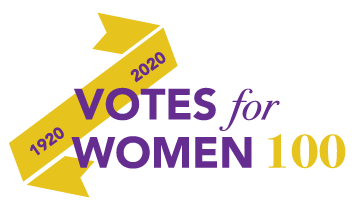The Challenge
Women who wanted to vote were smart, organized, and committed. But they had to persuade men—the only people allowed to vote—to support their efforts. It took almost a century. But finally, in 1920, it happened.
While the story is decades-long, the critical period was 1900 to 1920.
“There never will be complete equality until women themselves help to make laws and elect lawmakers.”
― Susan B. Anthony, reformer and women’s right activist, 1820-1906
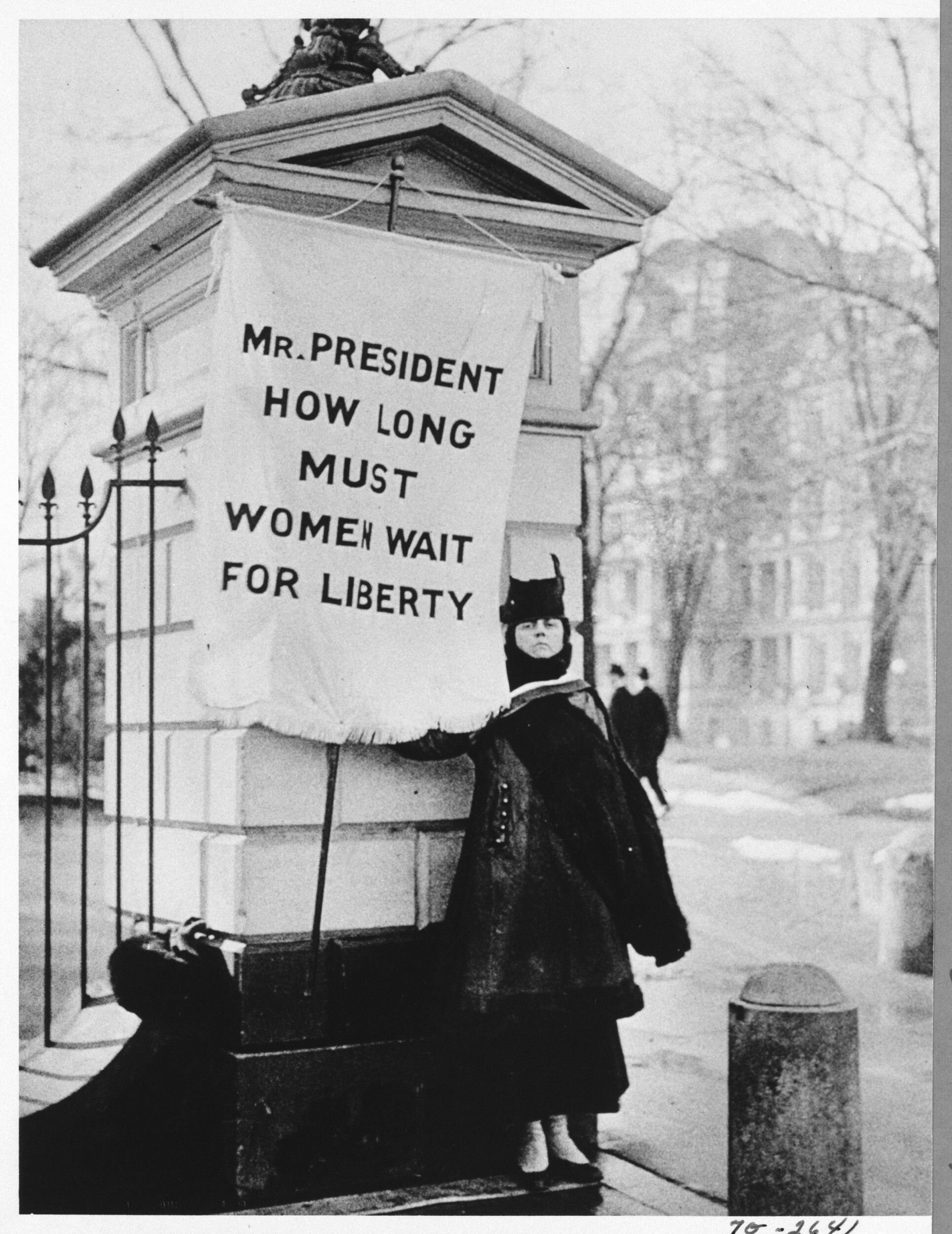
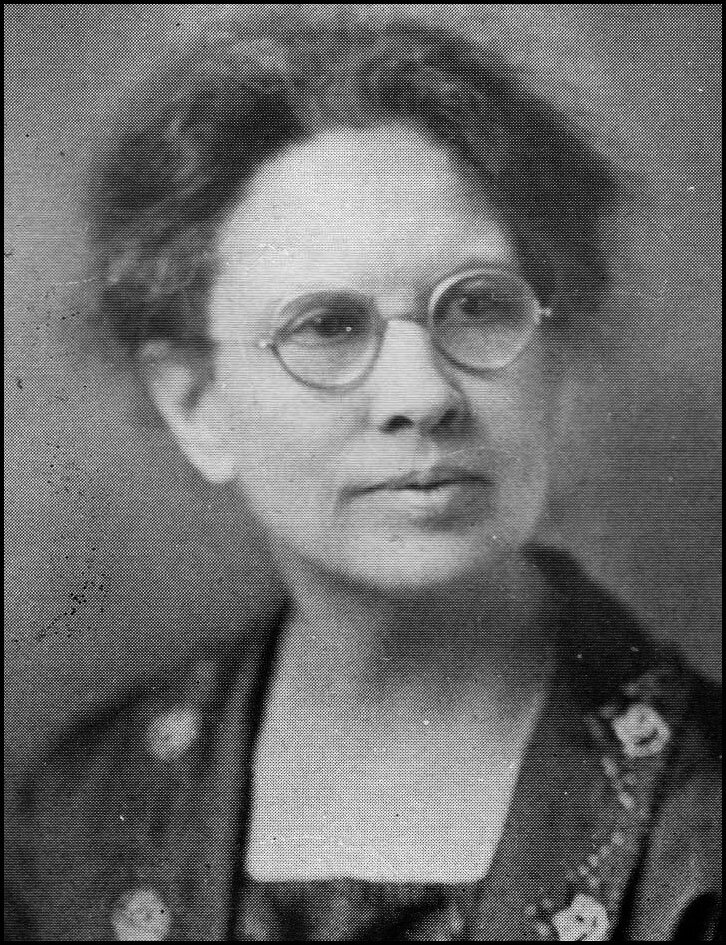
“In humanity, to believe in a thing means to get up and to do something.”
Ypsilanti science professor Jessie Phelps, co-founder of the Michigan State Normal College Equal Suffrage League
Washtenaw County’s Suffragists
By 1900, Michigan women who owned property could vote on some bond issues and in school-related elections. But there were no local or state organizations devoted to the cause of votes for women.
By 1910 there were five:
- Separate male and female clubs for students at Michigan State Normal College (now Eastern Michigan University)
- Suffrage associations in Ypsilanti and Ann Arbor
- The Washtenaw County Equal Suffrage Association
These clubs brought nationally- and internationally-known suffragettes to town and members joined in local and national actions.
Local activists included Ann Arbor’s Jennie Buell, Maria Peel, Mary Hinsdale, and Mrs. V.C. Vaughan. Ypsilanti’s leaders included Estelle Downing, Jessie Phelps, and Julia Quirk (of the Ypsilanti Ladies’ Literary Club).
Some local men were vocal supporters of equal suffrage, notably Charles McKenny, president of Michigan State Normal College (EMU) and P.R. Cleary, founder of Cleary College (now Cleary University).
The National Suffrage Effort
Color signified each national organization:
- Sunflower yellow: those aligned with Carrie Chapman Catt and the National American Woman Suffrage Association
- Purple, white and gold: those with Alice Paul and her Congressional Union members
- Red: those against suffrage, called “antis.”
The issue was complicated by other factors. Many saloon and brewery owners were anti. Brewers were afraid that if women got the vote they’d use it to make alcohol illegal.
Suffragists understood the power of a parade. Three Ann Arbor women traveled to Washington, D.C. on the eve of Woodrow Wilson’s first inauguration to represent Michigan in a huge and carefully choreographed parade.
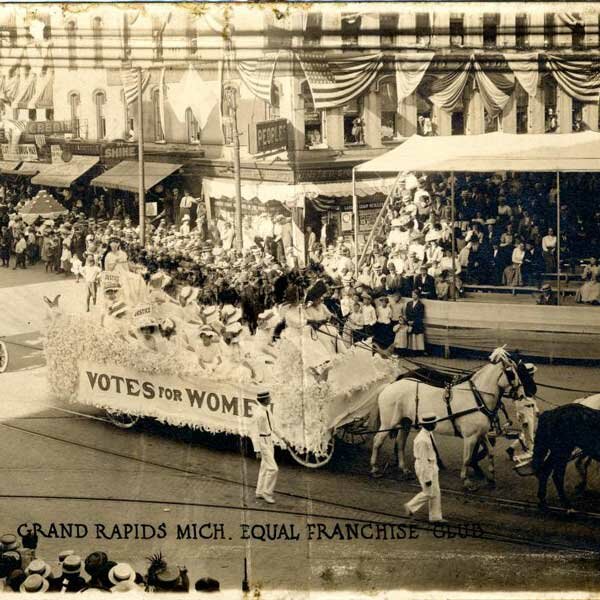
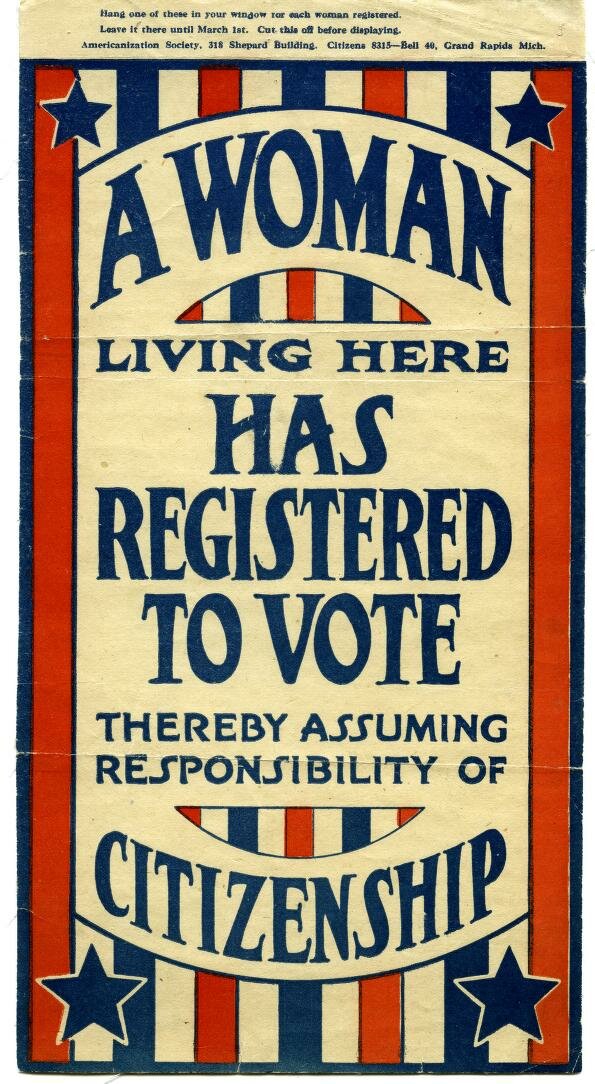
The Suffragist’s Closing Argument
The United States became embroiled in World War I to “make the world safe for democracy.” But suffragists asked, “How can this be true when half the population has no vote?”
Their question rang true. On November 5, 1918, Michigan’s men voted to give women the right to vote in state and local elections. And finally, in 1919, President Wilson called for passage of a national suffrage amendment. The amendment was passed by Congress and ratified by the required 36 states on Aug 26, 1920, becoming the 19th Amendment to the United States Constitution.
Its simple text belies the difficulties and sacrifice required to pass it:
“The right of citizens of the United States to vote shall not be denied or abridged by the United States or by any state on account of sex.”
Women’s Suffrage Centennial Reading List
Kids Titles
Suffragette: The Battle for Equality by David Roberts
Susan B. Anthony by Teri Kanefield
Rebel Voices: The Global Fight for Women’s Equality and the Right to Vote by Louise Kay Stewart
Bold and Brave: Ten heroes who won women the right to vote by Kirsten Gillibrand
Roses and Radicals: The Epic Story of How American Women Won the Right to Vote by Susan Zimet
Around America To win the Vote: Two Suffragists, a Kitten, and 10,000 Miles by Mara Rockliff
Miss Paul and the President: The creative campaign for the women’s right to vote by Dean Robbins
I Could Do That: Esther Morris gets women the vote by Linda Arms White
Adult Titles
The Women’s Hour: The great fight to win the vote by Elaine Weiss
Mr. President, How Long Must We Wait?: Alice Paul, Woodrow Wilson, and the Fight for the Right to Vote by Tina Cassidy
Shall Not Be Denied: Women Fight for the Vote: Official Companion to the Library of Congress Exhibition by Library of Congress
Votes for Women: A Portrait of Persistence by Kate Lemay
The Women’s Suffrage Movement by Sally Roesch Wagner
Why They Marched: Untold Stories of the Women who Fought for the Right to Vote by Susan Ware
The Illustrated Feminist: 100 Years of Suffrage, Strength, and Sisterhood in America by Aura Lewis
Picturing Political Power: Images in the Women’s Suffrage Movement by Allison K. Lange
Suffrage: Women’s Long Battle for the Vote by Ellen Carol DuBois
Recommended Articles
“The Complex History of the Women’s Suffrage Movement” by Jennifer Schuessler. New York Times, August 15, 2019
“Ninety Nine Years After Women’s Suffrage, The Fight For the Vote Continues” by Elaine Weiss. Time Magazine, August 26, 2019.
1920/2020 Women’s Vote Centennial. (website)
“The Long Battle for Women’s Suffrage” by Liza Mundy. Smithsonian Magazine, April 2019.
“Winning the Vote: A Divided Movement Brought About the Nineteenth Amendment” by Lisa Tetrault. Humanities: the Magazine of the National Endowment for the Humanities, Summer 2019.
“How Black Suffragists Fought for the Right to Vote and a Modicum of Respect” by Martha S. Jones. Humanities: the Magazine of the National Endowment for the Humanities, Summer 2019.
“Women’s Suffrage” Fact Sheet. Congressional Research Service article, July 8, 2019.
“Top 10 Women’s Suffrage Activists” by Jone Johnson Lewis. January 24, 2019.
“Women of Impact”, yearlong celebration of women’s achievements in recognition of the 100th anniversary of U.S. women securing the right to vote. National Geographic, beginning with the November 2019 issue.
“African American Women and the Nineteenth Amendment” by Sharon Harley. National Park Service, April 10, 2019.
“Looking for a Right to Vote:Introducing the 19th Amendment” by Ann D. Gordon. National Park Service, April 2, 2019.
“Women Have Had the Right to Vote for 100 Years. Here’s How to Celebrate”, by Mikaele Lefrak. WAMU, American University Radio, May 16, 2019.
“African American Leaders in the Suffrage Movement” by Edith Mayo. Turning Point Suffragist Memorial, c. 2019.
“Alice Paul” A Brave Yet Imperfect Fight for the 19th Amendment” by Pete Morgan. The Radical Tea Towel Company, January 11, 2019.
“The Imperfect, Unfinished Work of Women’s Suffrage” by Casey Cep. New Yorker, July 8 and 15, 2019.
“How Women Won the Vote; Celebrating the Centennial of Women’s Suffrage”. National Women’s History Project. June, 2018.
“Women Win the Vote”. National Women’s History Alliance. 2019.
“Shall Not Be Denied: Women Fight for the Right to Vote”, by Hannah Freece. Library of Congress Magazine, July/August 2019.
“U.S. Voting Rights Timeline”. Northern California Citizenship Project, 2004.
“When the Suffrage Movement Sold Out to White Supremacy” by Brent Staples. New York Times, February 2, 2019.
“U.S. Women’s Suffrage Timeline 1648-2016”. National Park Service, last updated October 2, 2019.
Michigan residents: To read the texts of the following two articles, visit https://mel.org/az.php, click on eResources, then search by title in the Academic Search Complete database:
“Celebrating the Nineteenth Amendment and Women’s Suffrage: A Website Toolkit” by Annette Lamb. Teacher Librarian, April 19, 2019.
“Gender Equality Guideline: Women’s Rights Milestones in the United States”. Congressional Digest, March 2019.
